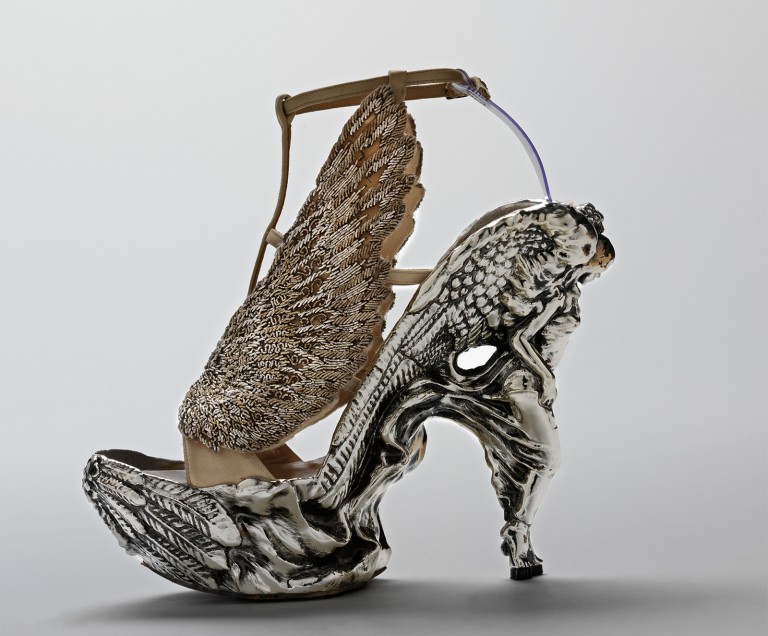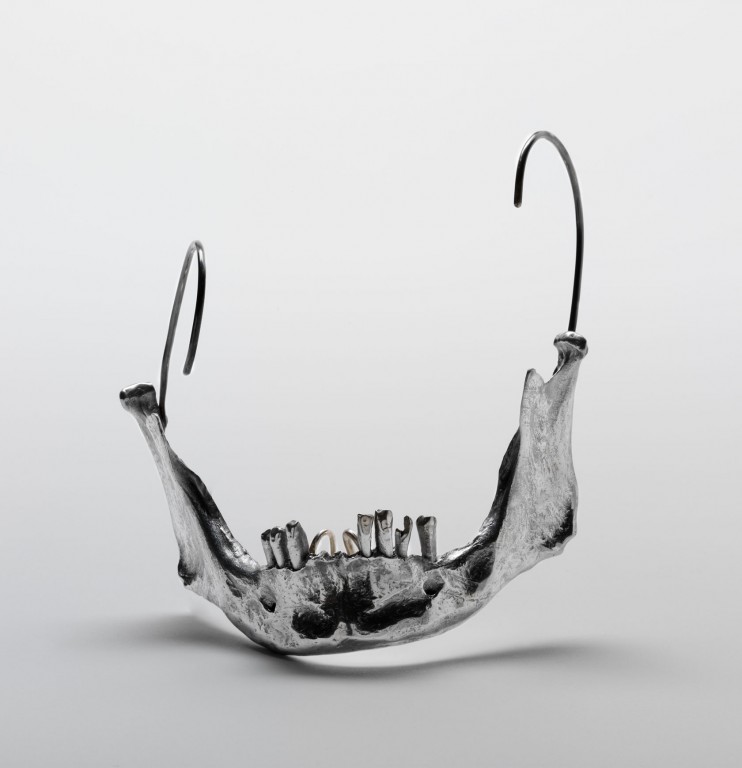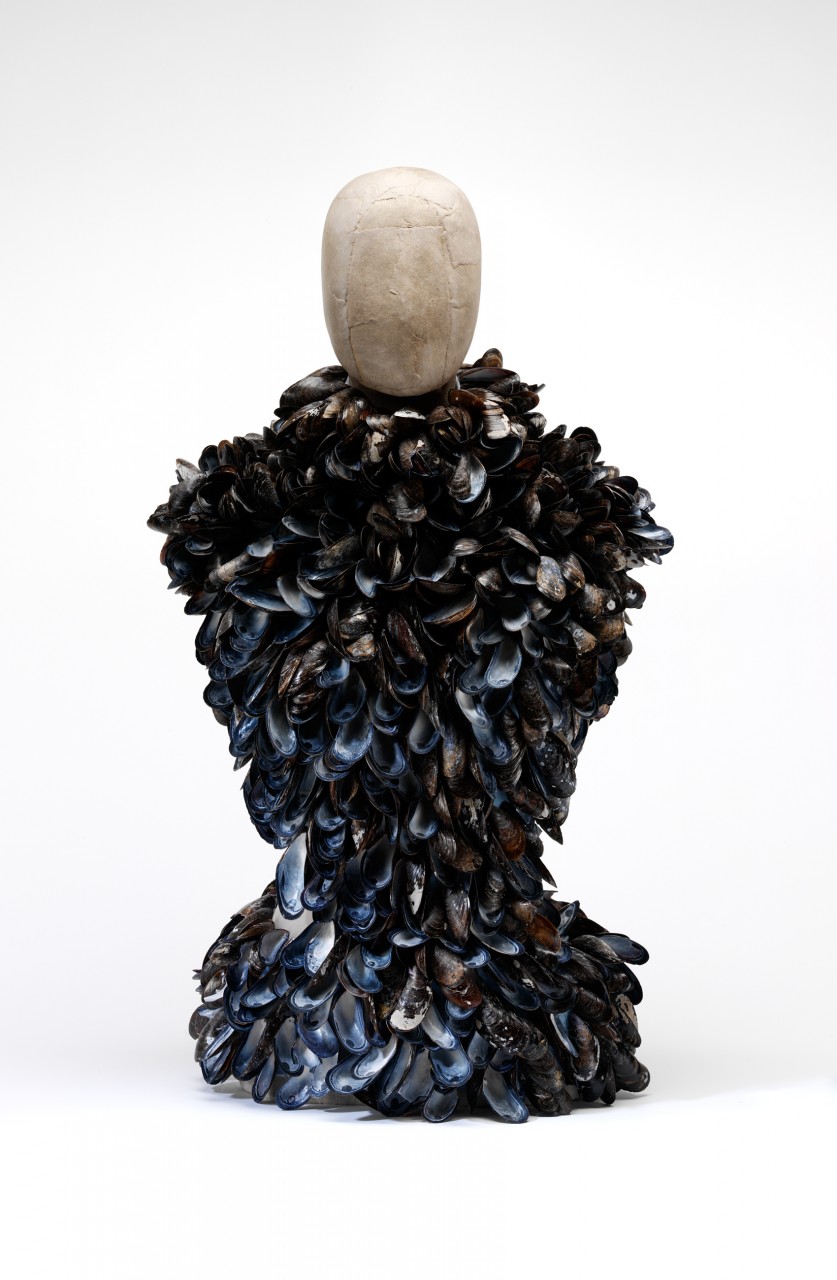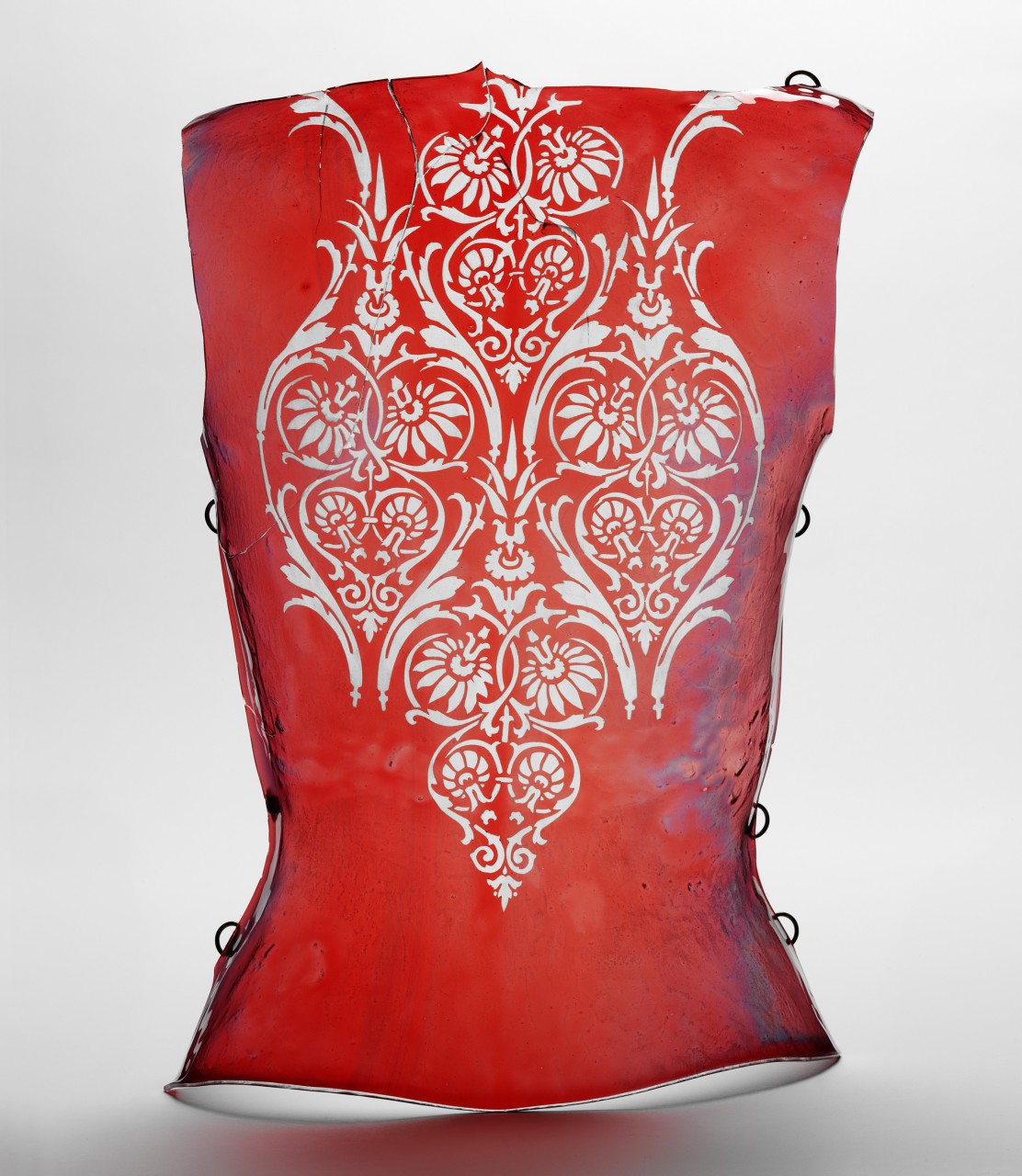ENCYCLOPEDIA OF
COLLECTIONS:
VOSS
McQueen had always declared that he wanted his shows to elicit a strong audience reaction. Voss, one of his most celebrated, achieved that result. An enormous clinical glass box formed the centrepiece, constructed to resemble a padded cell in a psychiatric hospital with white tiled floors and walls formed from surveillance mirrors. From the outset the mood was tense; the audience forced to endure an hour-long wait, staring at their own reflections whilst listening to the unnerving pulse of a heartbeat. Eventually, the light levels in the glass box rose to reveal models trapped in the cube, who were unable to see the audience.
Depictions of madness and incarceration were the principal inspirations behind the collection’s presentation. While the psychiatric hospital was most readily identifiable, Frank Darabont’s film The Green Mile (1999), which told the stories of inmates on death row, provided an alternative notion of confinement.
Voss, like so many of McQueen’s collections, harnessed multiple, disparate themes which coalesced into the designer’s unique vision of beauty. The title – the name of a Norwegian town renowned as a wildlife habitat – suggested the collection would celebrate nature. Bodices, skirts and dresses constructed from razor-clam, mussel and oyster shells astonished the audience with their elegance and ingenuity. McQueen’s love of birds found expression in feather skirts, and in a headdress composed of taxidermied hawks, which hovered perilously above a model and appeared to claw her hair through the bandages that swathed her head. The notion of medical scrutiny was starkly conveyed in a vermillion ensemble, modelled by Erin O’Connor, which comprised a skirt of dyed ostrich feathers and bodice of microscope slides hand-painted red to hint at the blood beneath the skin. The sharp glass of the slides hanging delicately from the bodice also mimicked the soft feathers
on a bird’s chest.
McQueen’s fascination with the Orient was explicit in designs featuring appliquéd chrysanthemum roundels; an embroidered grey silk ensemble with real amaranthus dangling from the rectangular headpiece; and a dress that incorporated the panels of an antique Japanese silk screen atop a skirt constructed from 80 polished black oyster shells. The look was completed by a neckpiece of silver branches, adorned with clusters of Tahitian pearls. The finale was the most transgressive of any of McQueen’s catwalk shows: a recreation of Joel-Peter Witkin’s Sanitarium (1983). As the models dispersed and the soundtrack of a pulsing heartbeat gave way to a flat-line monotone, the glass box shattered to reveal the voluptuous, naked figure of fetish writer Michelle Olley, reclining on a horned chaise longue in the graceful pose of a Botticelli painting, her masked head bowed and attached to a breathing tube. Moths fluttered about her before the lights dimmed and left the audience to ponder the meaning of beauty.







